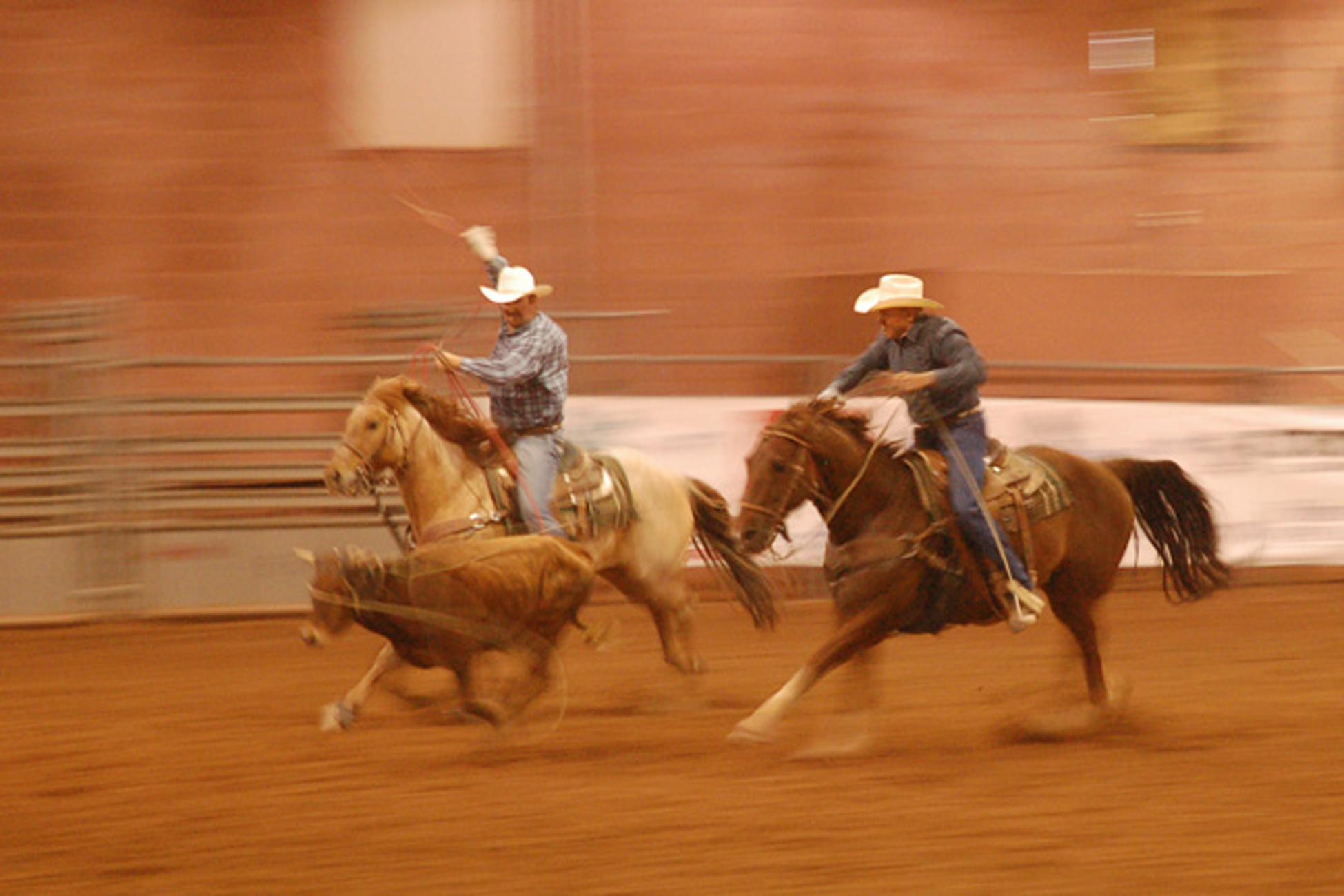Some information may be outdated.
A tractor rumbled as it raked the dirt floor of the arena Friday, May 4, day one of the U.S. Team Roping Championships Spanish Trail Classic in Moab.
Twenty teams in the No. 15 division – the best of the best – were getting ready to compete. Men waited on their horses, behind the gates. Most chatted; a few took their horses out for a short run on the edge of the arena.
One man stood and twirled his lasso.
After a prayer, the National Anthem and a couple practice runs, the competition began.
Men on their horses bolted out of the gate on the far end of the arena. They raced after a speeding steer, ropes twirling. One partner, the header, threw first, lassoing the steer around his head. The second partner, the heeler, tossed his rope next, trying to lasso the steer around his two hind feet.
Some teams did better than others.
Those who successfully roped the steer got an official time and advanced to the next of five rounds.
This was just the beginning of three full days of team roping at the Old Spanish Trail Arena.
The weekend-long event was a qualifying round for the nation’s team roping championships, held inOklahoma Cityin October. Winners in Moab last weekend get to compete in Oklahoma in the fall.
An estimated 600 to 800 people competed in Moab, one of 83 qualifying opens across the country.
While not a wildly popular spectator sport, team roping does get fans – most of them family members of the competitors.
Kathy Cooper ofMontrose,Colo., gave her 7-week-old granddaughter a bottle while she watched the competition in the aluminum bleachers Friday. She and her daughter-in-law were there to watch Kathy’s husband, Gary, and son, Cole, compete.
Gary Cooper’s father and grandfather roped, Kathy Cooper said. So it was natural he would, too, and that he’d teach his son.
“It’s just been a family thing,” Kathy Cooper said. “It’s a real family sport, though spectating can get kind of old. It goes 12 hours and you can sit all day.”
Gary Cooper practices roping two to three times a week, Kathy Cooper said. Her son, who trains horses for a living, does it daily.
“It takes a lot of talent,” she said, “a lot of horsemanship.”
It’s not just men who rope, though.
Sabrina Kreutzer of LaVeta, Colo., was watching the Friday morning rounds, but she planned to compete later on.
Her husband and their two sons rope, as well, she said, and were competing that morning.
“I’ve done it as long as I can remember,” Kreutzer said. “It’s just something my husband and I have always done. When the kids were old enough, they decided they wanted to do it, too.”
Kreutzer said she learned to rope when she was 7 or 8; her dad taught her. And while she spends only seven or eight hours a week roping now, at one point she was roping for two hours a day/five days a week.
Experience aside, competing in team roping is never easy.
“It’s always a challenge, no matter how long you’ve done it,” she said. “There’s a lot of variables with your horse, with the cattle. It’s a constant challenge.”
Art Head of Moab was working nearby when he heard noise at the arena and decided to check it out.
Since the show was free to fans, anyone was welcome to stop by and stay as long as they liked.
Head was happy he came.
“Anything equine, I got to stick my nose in, see if I can learn something,” he said. “There’s always the excitement of horses going to bucking.”
His friend, Ethan King, stood with Head at the top of the bleachers. His arms rested on the railing, as he watched.
A former roper, King, also ofMoab, was curious if he’d see any of his old friends.
Plus, he said, “I just like to watch the horses work and watch the cattle, see if they’re roping.
“Watching team roping is a 10-minute interval,” though, he added.
For more information on the U.S. Team Roping Championships, visit www.ustrc.com.
Appreciate the coverage? Help keep local news alive.
Chip in to support the Moab Sun News.





